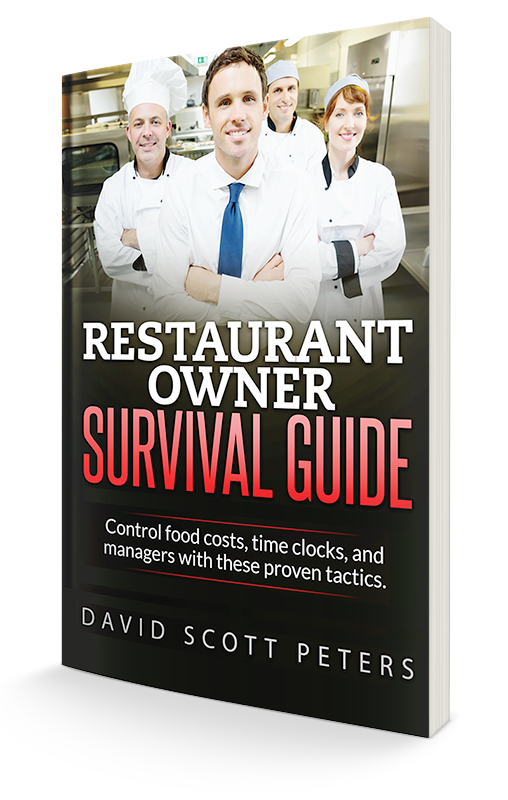A Plan to Reduce Restaurant Prime Cost 4-7 Percent
Year after year I speak literally all over the country, sometimes even internationally, teaching restaurant owners how to reduce restaurant prime cost. The crowds range from small groups of a dozen to rooms filled with 300-plus people. No matter the size of the room or the location of the presentation, you will hear one sentence out of my mouth with almost 100 percent certainty: “The two most important systems any restaurant should have in place are budgets and recipe costing cards!” (I usually add to that, “what are the two systems most independent restaurants don’t have in place? Budgets and recipe costing cards!) If you have seen me speak, you have likely heard that point made.
Most people who hear me speak about recipe costing cards conclude, “I MUST GET MY RECIPE COSTING CARDS COMPLETED ASAP!” They then only focus on completing their recipe costing cards and ignore some simple systems that result in incredible savings – savings that can accrue and reduce restaurant prime cost while working on recipe costing cards. Here are some examples of the things a restaurant owner who only focuses on recipe costing cards misses out on:
- Daily systems that save money daily: By completing a simple 15 minutes of work a day in daily paperwork (including manager logs and sales results), and I mean daily, our Members start using the purchase allotment system. This one system alone puts you on a path of ordering on budget each and every order, allowing you to give up control of ordering without giving up control of your checkbook. This system can easily save you $11 per day, and the ONLY way it doesn’t do that is if you don’t use it.
- Reducing food cost by 2–3 percent in 30–60 days: Restaurant owners who use two clipboard systems, along with the use of the purchase allotment system, will see a reduction in their actual food cost by 2–3 percent almost overnight. The first clipboard system I am talking about is a key item report. It’s a simple count sheet that prevents theft of expensive items or items you want to closely track. The second clipboard system I am talking about is a waste sheet. By simply documenting all food items that have been dropped, burned, spoiled, stolen, double ordered, etc., you can proactively manage your kitchen because when you see a problem, you get to fix it that same day instead of waiting for your numbers from the accountant to find your food cost is too high 15 days into the next period. Which means you’ve probably made the same dumbass mistakes for the past 45 days, losing money hand over fist, and now you have to fix it when it’s almost too late. In the case of our Members, the only ones who have not seen a 2-3 percent drop in their food cost when using the purchase allotment system, key item report and waste sheet are those members who don’t use them!
- Stop bleeding labor cost: Restaurant owners love to talk about scheduling and many think the trick to saving money on labor is somewhere in the schedule. I love online scheduling (available through our restaurant management software), but it doesn’t make you money. What makes you money is when you add one more system: the labor allotment system. While the purchase allotment system allows you to give up ordering without giving up control of your checkbook and order on budget, labor allotment takes about 10 minutes to complete, allows you to adjust your schedule to start the next week on budget rather that bringing people in to play grab-ass at the time clock, costing you thousands in wasted labor dollars. To be more specific, grabbing your actual labor numbers from last week – labor dollars spent and labor hours worked – and adding it to your target labor budget for next week, the system will tell you exactly how many hours you have to schedule and how many labor dollars you have to spend for each position to schedule next week on budget. Don’t be surprised when you start seeing a huge improvement to your bottom line when you aren’t wasting money at the time clock. For our average Member, this is another 2–3 percent to their bottom line!
Do the simple stuff, too
Yes, I want you to work on your recipe costing cards. I want you to spend the 40–60 man hours it takes to set them up properly. But what I don’t want you to do is ONLY work on recipe costing cards. Take a look at the top of this article. I said you could drop your food cost by 2–3 percent with 15 minutes of work, along with two clipboard systems. I said the average Member drops their labor cost by 2–3 percent by simply editing schedules to be on budget. There’s 4–6 percent on the table just doing the simple stuff first.
Don’t wait. Execute the plan I have set forth in this article and in three months you will have reduced your prime cost by 4–6 percent. Plus, you will have a new menu on tables in four to five months. This will save you another 3–7 percent. When you work with Restaurant Systems Pro and use our software, in six months, along with many other systems we will help you implement, you have the potential to reduce restaurant prime cost by 7–13 percent! You can just work on recipe costing cards and then give up after four or five months because you haven’t seen results, or you can implement these other systems and see real savings within weeks.
For more information about systems that reduce restaurant prime cost, read our free special report, Breaking Away from the Insanity: How to easily take control of your restaurant and make more money. Download it here.





